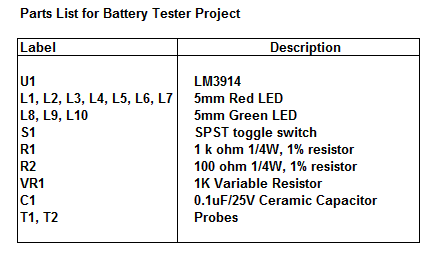How would you use an SE with a chip enable? Good question and well one thing leads to another and before you know it a new solar roller is born. The design started out as a simple example of using the 1381wr SE to enable a 74AC240 chip. But with all those spare inverters looking for something to do, the SE kind of got integrated with a whole new solar roller design. The Solar Revolver v3 is the latest incarnation of an evolving circuit. If you have followed the design so far, you will agree that first two versions looked pretty on paper but they had less than stellar performance in reality. They were not very efficient during direction changes and had unpredictable behavior.
The Solar Revolverv3 is recommend for those who would like to test out this single chip solar roller with turn and reverse which has some unique features and is very efficient.
- 1. new 1381 SE with timed reset
- 2. revolve (turn) left/right
- 3. reverse
- 4. new ultra low power delay Nu
- 5. new delay Nu memory
NEW 1381 SE
The original intention was to use a variation of the 1381wr SE to enable a 74AC240 chip, but that SE is designed to drive a motor directly and would be overkill. The simple Miller Engine would suitable but I opted for a new 1381 SE design in the Solar Revolver v3 which also uses a timed reset and uses the same number of parts but has a higher trigger voltage: the 1381tr SE .
As shown, this SE uses a 1381E voltage detector with a red LED in series to raise the trigger level to 4.0V. A 10uF cap between the 1381 power and ground pins together with the 1M resistor on the output pin causes the SE to reset after about 1 second. A single NPN transistor used used as a inverter to match the requirement for a low current active low enable. For this application , the 1381tr SE works just like the Miller Engine and draws less than a uA of current during charging.
I used a Sunceram 5V solar cell and and 10,000 uF cap (C1) to match the SE 4V trigger voltage. The C1 cap can be any value between 10,000 uF to 1F . Since the length of time that the SE is active is primarily determined by the SE capacitor it means that small capacitor values for C1 give deep discharges and large C1 caps would hold up the voltage during discharge to give quicker charging times. With a large C1 and a change in the SE cap the motors can run for a lot longer than 10 seconds but also take longer to charge back up.
When the 1381 output goes high it drives the 2N3904 inverter base through the 1M resistor and the active low collector signal is used to control the enable pin 19 of the four inverters of group B.
Two inverters of group A and two inverters of group B are used to drive the motors and when inverters B are disabled motor drive is turned off (High-Z) and the motors continue to "freewheel" while power consumption drops to zero.
NEW TURN DELAY CIRCUIT
The left/right turn and reverse switches discharge the 10uF delay caps and reverse one or both motors. This causes the roller to revolve around its center or to back up. The turn/reverse time is about 4 seconds BUT the delay only times out when the SE is active. If the SE is active for 1 second it will take 4 or 5 bursts of motion for the delay to time out. In fact, depending on the charging time, the 4 second turn or reverse period can take much longer and be spread over minutes of charging interspersed with short bursts of motion.
A second inverter from group A is used with a diode to provide feedback and a transition by rapidly charging up the 10uF caps when the turn and reverse delay Nu times out. This method avoid high frequency oscillation, hesitation and wasted energy during changes in direction.
While the SE is charging, the 10uF capacitors of the turn reverse delay circuit are isolated with the two group B inverter outputs tristated. With the cap essentially disconnected, the inputs to the motor driver are pulled up through the 330K resistors to V+ and CMOS power consumption is zero.
The effect of analog voltages applied to CMOS inputs are a common problem in many solar designs that use RC delay circuits especially when Vcc is above 3V. The analog levels cause high power consumption and oscillations. Analog voltages on a timing capacitor connected to the CMOS input can cause a 74AC240 to draw up to 50ma while charging which would at the very least slow the charging rate and might just hang the circuit up! The new isolating Nu delay circuit is a big improvement over previous designs and avoids all of those problems.
SUMMARY
With the 4V 1381tr Solar Engine, the single 74AC240 design is good enough to drive 2 small efficient motors mounted on a light wheeled platform. The solar powered design includes turn and reverse for two motors and incorporates a new energy saving turn and reverse delay circuit.
.bmp)
.bmp)
.bmp)
.bmp)
.bmp)
.bmp)

.bmp)